| Advancing Integral Heritage Management |
ABOUT | HOLISTIC HERITAGE MANAGEMENTHolistic PlanningThe most common response to “Why do plans fail or end unimplemented?” is a lack of some resource. Usually we hear one or more of the Big Five Lacks: Money, Time, Personnel, Information, or Political Will. But PUP was born with the initial observation that the true reasons are deeper than lacks. If you suffer a lack, you still need to ask why several times to get to a clear picture. Our response has emerged over the years culminating in the concept of Holistic Planning (HP). The definition of Holistic PlanningHolistic planning is a facilitated, continuous dialogue with heritage area constituencies designed eventually to construct a consensus about a desired evolving future. To accomplish this, Holistic Planning
Why Planning Has Nothing To Do With Making PlansThis video offers a glimpse into the core difference between conventional and Holistic Planning upon which is based the PUP Global Heritage Consortium and our upcoming book by Kohl and McCool (Fulcrum Books, 2016). This video was also made as a candidate for the TEDxMHK. The actual talk time is 3 min and 23 seconds with the rest dedicated to a written summary at the end. |
George Floyd's curbside death site transformed overnight into a heritage site. What does this say about the role of heritage in society?
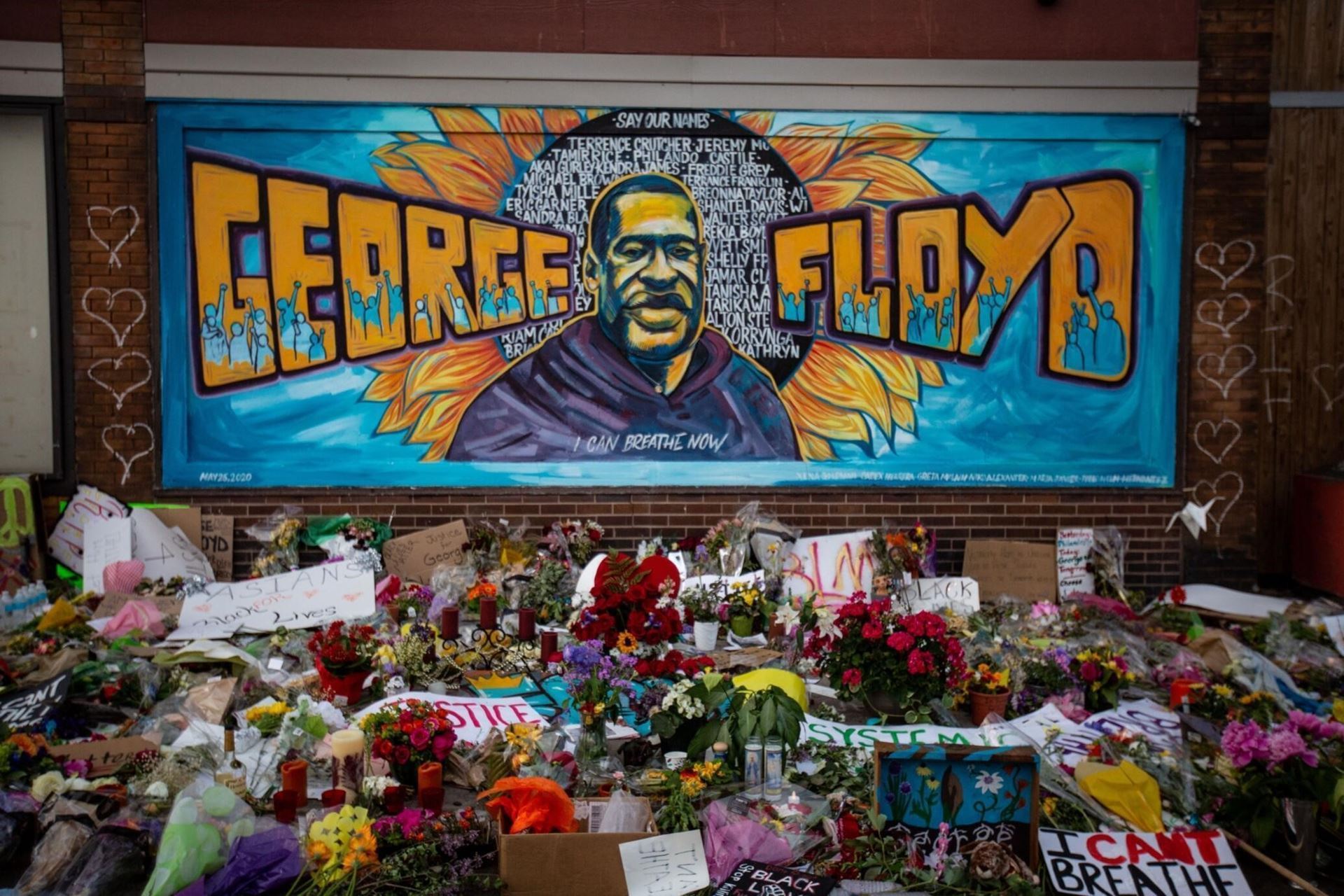 El sitio de la muerte en la acera de George Floyd se transformó de la noche a la mañana en un sitio patrimonial. ¿Qué dice esto sobre el papel del patrimonio en la sociedad?
El sitio de la muerte en la acera de George Floyd se transformó de la noche a la mañana en un sitio patrimonial. ¿Qué dice esto sobre el papel del patrimonio en la sociedad?
Essay that accompanied PUP statement on death of George Floyd 22 June 2020 Holistic Heritage Management What Does George Floyd’s Death Site Teach Us about the Nature of Heritage and Its Role in Society? Jon Kohl Executive Director PUP Global Heritage Consortium
As police officer Derek Chauvin’s knee compressed George Floyd’s neck, squeezing out his spirit, but instead of passing beyond, it jumped immediately into the civil rights movement in America. But something else happened. While his spirit jumped, it permanently marked the very site where the murder occurred. And as fast as his life empowered the movement, his death transformed that Minneapolis curbside into a heritage site. Here I explain heritage from a holistic heritage management point of view and reflect on current events unfolding in the streets, legislatures, and homes of people around the world. Holistic Nature of HeritageAll heritage connects like a galactic spiderweb all the way back to the Big Bang and far into our future. You strum any heritage and it vibrates backward and forward in time. All events and processes throughout the universal evolutionary arc leave footprints, imprints, and hints of their changes starting with the Big Bang whose first microwave emissions can still be detected today. When groups of people give special meaning to these resources, this evidence, these reminders, they become heritage that mark the evolutionary trail. While astronomers continue to discover more evidence of great events in the universe’s development which become part of our galactic heritage, so too here on Earth, geologists collect meteorites and biologists mount fossilized dinosaurs in museums to expand the list of meaningful resources that we consider natural heritage. More recently in evolutionary time anthropologists, archeologists, architects, and historians add objects of human creation to the list of cultural heritage as well. Whether a church, archeological ruin, or unique dance, all meaningfully communicate about our past, present, and future. But they do not communicate the same thing to everyone. All heritage objects (including ideas) can be seen, described, and interpreted from multiple angles. Place on a large table the Hope Diamond, an ancient Egyptian sarcophagus, or Thomas Jefferson’s pen that signed the Declaration of Independence. As you walk around the table, new facets and details reveal themselves from every angle. Of course, we don’t just describe these objects physically but from different interpretive perspectives based on different values and experiences. For example Jefferson’s pen variably represents a fight against royal tyranny, the first formal declaration of modernism by expressing equal human rights (“All men are created equal…”), or a painful irony in a country that still suffers deep racism and a very lack of those declared equal rights. Our perspectives focus on exterior features of the pen, such as the quill-and-ink technology and interior dimensions as well including Jefferson’s personal pen choice and deeper cultural meanings of the document’s revolutionary intent.
Heritage Sites Do Not Need to Be OldMany heritage sites dating back hundreds and thousands of years dot UNESCO’s World Heritage List. But age is not what makes a place heritage, rather the special meanings that collective groups of people ascribe to it. Sometimes heritage crystallizes stories of glory as in how the Portuguese fought off the Omani Arabs for three years to defend Kenya’s Fort Jesus now a World Heritage Site or it encodes collective shadows and intergenerational trauma as at Auschwitz in Poland. George Floyd’s murder location, now only a few weeks old, has already been sanctified as heritage. People venerate it. They pray there. They decorate it with richly symbolic artwork. That place now flows, like a tributary, into larger stories in American history unfolding as you read. It may become as significant as the Edmund Pettus Bridge in Selma, Alabama or the Martin Luther King Jr. Memorial in Washington, DC. We can also see every place from different perspectives. You can walk around Floyd’s death place and see artistic expression only visible from certain angles. Maybe you look up from where he lay asphyxiated by a police cruiser’s tire at nearby buildings and attribute ironies based on products sold there or people who might have witnessed the very moment those four officers tossed a match into hyper-dry kindling. You could also see this site as the flashpoint of the protests, a tipping point of change, a potential system reconfiguration. Or you could see it from another viewpoint that colored minorities are displacing good-old white culture that built the United States and some people’s deep fear of losing that. No perspective is objectively correct; but they can still evolve over time as society and culture change. From a holistic perspective, we recognize that no one deserves criticism for their beliefs because no one chooses their beliefs. Everyone has a right to believe what they do (what psychologist Terri O’Fallon calls “developmental rights”). Otherwise we would punish children for believing a boogeyman lurks in the closet or indigenous farmers who pray to their spirits for rain in desperate need to save drought-stricken crops. While people should not be judged for what they believe, they can be for what they do. When people violate the norms of the social contract that they have signed to be part of a particular group, whether a rock band or society, independent of what they believe, then justice can be rightfully invoked as for the police in Floyd’s murder. A teenage die-in at the White House expresses one powerful point of view. // Un “suicidio colectivo” de adolescentes frente la Casa Blanca expresa un poderoso punto de vista. What Holistic Heritage Managers Must ConsiderHeritage managers have several obligations to their heritage site. They must maintain its integrity, conserving those aspects considered most authentic to its original form. They understand that people endow their site with multiple meanings, which includes those that managers themselves hold. Often these meanings conflict and precipitate great moral difficulty for managers. Southern state governments have had to manage both Black Lives Matter demands and Confederate meanings for statues of such historically important figures as General Robert E. Lee. How do they satisfy everyone’s need for their ascribed meanings to be honored and shared? Managers realize that the story told can wield incredible power with people. Heritage sites concentrate meaning that can endure for millennia. Neil Silberman wrote a powerful article, “The Tyranny of Narrative,” on the centuries-old conflict between narratives that still haunt the Middle East. What seems like ancient history to some can spark memory wars for others even centuries later. Despite its brutal fundamentalist outlook, ISIS better than anyone understands the power of heritage places to crystallize meaning in time. Because of this, they labored to destroy heritage sites in Iraq and Syria such as Palmyra. They understood that if they could destroy that heritage, they could hobble others’ cultural stories and then much more easily replace them with their own. The Spanish did this when they burned the Mayan codices and built their churches on top of indigenous temples in the New World and Jewish synagogues in the Old. In these cases, because of the intensity of meaning ascribed by the victimized Muslims, Mayans, and Jews to their sacred heritage, this same heritage acquired strong meaning (though quite different) from their oppressors — otherwise they wouldn’t have bothered to destroy it. In this sense, heritage sites earn a sort of consensus of meaningfulness even among very different perspectives and agendas. Holistic Heritage InterpretationThe stakes are high then for heritage areas, which is why even threats without the direct intent to destroy heritage, such as the Dakota Access Pipeline which plowed under sacred burial grounds to make way for the pipeline, was met with such passionate response from the Standing Rock Sioux and allies.
Holistic managers must realize that people have different values and worldviews. Unassimilated Amazonian tribes view the world very differently than do Vikings or Roman emperors, or Enlightenment scientists, or 60s-era hippies, or white farmers in the American South chained to a 401-year history of slavery, or black Americans chained to a 401-year history of slavery. These different groups and their values often conflict: every day newspapers document people who deny climate change and fight to mitigate it — people who demand that creationism be taught in schools and those who demand Darwinian evolution — people who value Anglo-Saxon tradition and people who pour into the streets to promote multiculturalism and fulfill the Declaration of Independence’s long-unfulfilled promise of equal rights. And this brings us to George Floyd and my organization’s mission.
PUP Global Heritage Consortium’s Mission about HeritageAs executive director of the non-profit PUP Global Heritage Consortium, I can say that our mission is through holistic heritage management to conserve natural and cultural heritage for the betterment of planetary wellbeing. Its preservation does not mean building fortresses around heritage that some value and others do not. It means convening different meanings for heritage, understanding that all meanings have backgrounds dating back hundreds or even billions of years and that the reconciliation or at least juxtaposition of these meanings, not their erasure, has great implications for our future (“remembering forward” as Silberman says). Many have characterized our current situation as the ultimate test for our species on whether or not we can continue to evolve: Can humanity survive this narrow historical yet treacherous strait of climate change, pandemics, weapons of mass destruction, authoritarianism, and deep rifts in equality and wealth among our peoples? Whether or not you support restrictions on police brutality, George Floyd’s death unleashed a flood of consciousness and meaning whose heritage markers, we hope, will one day tell a powerful story that helped to navigate humanity through that strait.
| Ensayo que acompañó el enunciado de PUP sobre la muerte de George Floyd 22 de junio de 2020 Gestión holística del patrimonio ¿Qué nos enseña el lugar donde murió George Floyd sobre el patrimonio y su papel en la sociedad? Jon Kohl Director Ejecutivo PUP Global Heritage Consortium
Mientras la rodilla del oficial Dereck Chauvin sofocaba el cuello de George Floyd, exprimió su espíritu, pero no lo silenció. Saltó inmediatamente al movimiento de derechos civiles en América, y algo más pasó. Mientras su espíritu se elevaba, marcó permanentemente el lugar donde su muerte ocurrió. Así, tan rápido como su vida empoderó el movimiento, su muerte transformó esa acera de Minneapolis en un lugar patrimonial. En estas páginas explicaré qué es el patrimonio desde un punto de vista de manejo holístico del patrimonio, y reflexionaré acerca aquello que pasa en las calles, las legislaturas y las casas de la gente alrededor del mundo.
La naturaleza holística del patrimonioTodo el patrimonio se conecta como una telaraña galáctica desde el Big Bang hasta nuestro futuro. Cuando rasgas cualquier patrimonio éste vibra hacia atrás y hacia adelante en el tiempo. Todos los eventos y los procesos a lo largo del arco evolutivo universal dejan huellas e indicios de sus cambios a partir del Big Bang, cuyas primeras emisiones de microondas todavía se pueden detectar hoy. Cuando grupos de personas dan un significado especial a estos recursos, esta evidencia, estos recordatorios, se convierten en el patrimonio que da cuenta del camino evolutivo. Al tiempo que los astrónomos continúan descubriendo más evidencia de grandes eventos en el desarrollo del universo que se convierten en parte de nuestro patrimonio galáctico, también aquí en la Tierra, los geólogos recolectan meteoritos y los biólogos montan dinosaurios fosilizados en museos para expandir la lista de recursos significativos que consideramos patrimonio natural. Más recientemente, en el tiempo evolutivo, los antropólogos, los arqueólogos, los arquitectos y los historiadores también añaden objetos de la creación humana a la lista del patrimonio cultural. Ya sea una iglesia, una ruina arqueológica o una danza tradicional única, todos comunican significativamente algo sobre nuestro pasado, presente y futuro. Sin embargo, no comunican lo mismo a todos. Todos los objetos patrimoniales (incluidas las ideas) se pueden ver, describir e interpretar desde múltiples ángulos. Si colocamos en una gran mesa el diamante Hope, un antiguo sarcófago egipcio, o el bolígrafo de Thomas Jefferson que firmó la Declaración de Independencia, se revelarán al caminar alrededor de ella facetas y detalles distintos desde todos los ángulos. Por supuesto que no solo describiremos estos objetos físicamente, sino desde diferentes perspectivas interpretativas basadas en distintos valores y experiencias. Por ejemplo, la pluma de Jefferson representa de forma variable una lucha contra la tiranía real, la primera declaración formal del modernismo al expresar los mismos derechos humanos (“Todos los hombres son creados iguales ...”), o una ironía dolorosa en un país que aún sufre un racismo profundo y una falta muy grande de los declarados iguales derechos. Nuestras perspectivas se centran en las características exteriores del lápiz, como la tecnología de pluma y tinta y las dimensiones interiores, así como la elección del lápiz personal de Jefferson y los significados culturales más profundos detrás de la intención revolucionaria del documento.
El patrimonio no debe ser forzosamente antiguoLa Lista de Patrimonio Mundial de la UNESCO está salpicada por sitios que datan de hace cientos y miles de años. Sin embargo, es importante recordar que la edad no es lo que hace que un lugar sea patrimonio, sino los significados especiales que los grupos de personas le atribuyen. En ocasiones el patrimonio cristaliza historias de gloria, como aquel que recuerda el lugar donde los portugueses lucharon contra los árabes omaníes durante tres años para defender el Fuerte Jesús de Kenia, ahora Patrimonio de la Humanidad, o codifica sombras colectivas y traumas intergeneracionales como en Auschwitz en Polonia.
El lugar del asesinato de George Floyd, que ahora tiene solo unas pocas semanas, ya ha sido santificado como patrimonio. La gente lo venera. Rezan allí. Lo decoran con obras de arte ricamente simbólicas. Ese lugar ahora fluye, como un afluente, en relatos más grandes de la historia estadounidense que se desarrollan a medida que lees. Podría llegar a ser tan significativo como el Puente Edmund Pettus en Selma, Alabama o el Monumento a Martin Luther King Jr. en Washington, DC. También podemos ver cada lugar desde diferentes perspectivas. Puedes caminar por el lugar de la muerte de Floyd y ver la expresión artística solo visible desde ciertos ángulos. Tal vez miras hacia arriba desde donde yacía asfixiado por el neumático de un crucero de la policía en edificios cercanos y atribuyes ironías basadas en productos vendidos allí, o en personas que podrían haber sido testigos del momento en el que esos cuatro oficiales lanzaron un cerillo que hizo arder al mundo. También podría ver este sitio como el punto álgido de las protestas, un punto de cambio, una posible reconfiguración del sistema. O podría verse desde otro punto de vista que las minorías de color están desplazando a la cultura blanca de antaño que construyó los Estados Unidos y el profundo temor de algunas personas de perder eso. Ninguna perspectiva es objetivamente correcta; sin embargo, pueden evolucionar con el tiempo a medida que la sociedad y la cultura cambian. Desde una perspectiva holística, reconocemos que nadie merece críticas por sus creencias porque nadie elige sus creencias. Todos tienen derecho a creer lo que hacen (lo que el psicólogo Terri O’Fallon llama “derechos de desarrollo”). De lo contrario, castigaríamos a los niños por creer que un hombre del saco se esconde en el armario o los agricultores indígenas que rezan a sus espíritus por la lluvia en la desesperada necesidad de salvar los cultivos afectados por la sequía. Si bien las personas no deben ser juzgadas por lo que creen, sí pueden serlo por lo que hacen. Cuando las personas violan las normas del contrato social que han firmado para formar parte de un grupo en particular, ya sea una banda de rock o una sociedad, independiente de lo que creen, entonces se puede invocar la justicia legítimamente en cuanto a la policía en el asesinato de Floyd.
Lo que los gestores holísticos de patrimonio deben considerarLos gestores del patrimonio tienen varias obligaciones con los lugares con los que trabajan. Deben mantener su integridad, conservando aquellos aspectos considerados más auténticos en su forma original. Entienden que las personas dotan a su sitio de múltiples significados, que incluyen aquellos que los propios gestores tienen. Con frecuencia estos significados entran en conflicto y esta condición gesta dificultades en su manejo. Los gobiernos estatales del sur de los Estados Unidos han tenido que gestionar tanto las demandas de Black Lives Matter como los significados confederados para las estatuas de figuras históricamente importantes como el general Robert E. Lee. ¿Cómo satisfacen las necesidades de todos para que sus significados atribuidos sean honrados y compartidos? Los gestores se dan cuenta de que la historia contada puede ejercer un poder increíble sobre las personas. Los sitios patrimoniales concentran el significado que puede perdurar por milenios. Neil Silberman escribió un poderoso artículo, "La tiranía de la narrativa", sobre el conflicto centenario entre las narrativas que aún persiguen al Medio Oriente. Lo que parece ser historia antigua para algunos puede provocar guerras de memoria para otros, incluso siglos después. A pesar de su brutal perspectiva fundamentalista, ISIS (el Estado Islámico) entiende mejor que nadie el poder de los lugares patrimoniales para cristalizar el significado a tiempo. Debido a esto, trabajaron para destruir sitios patrimoniales en Irak y Siria como Palmyra. Entendieron que si podían destruir ese patrimonio, podrían obstaculizar las historias culturales de otros para entonces reemplazarlas con mucha más facilidad por las suyas. Los españoles hicieron esto cuando quemaron los códices mayas y construyeron sus iglesias sobre templos indígenas en el Nuevo Mundo y sinagogas judías en el Viejo. En estos casos, debido a la intensidad del significado atribuido por los musulmanes, mayas y judíos victimizados a su herencia sagrada, esta misma herencia adquirió un fuerte significado (aunque bastante diferente) de sus opresores; de lo contrario, no se habrían molestado en destruirla. En este sentido, los sitios patrimoniales ganan una especie de consenso de significado incluso entre perspectivas y agendas muy diferentes.
Interpretación holística de patrimonioHay mucho en juego para las áreas patrimoniales, por lo que incluso las amenazas sin la intención directa de destruir el patrimonio, como en el caso del Gasoducto de Acceso Dakota en Estados Unidos (Dakota Access Pipeline) cuyos promotores ordenaron el arrasar los cementerios sagrados para abrir paso para la construcción del gasoducto, recibieron una respuesta tan apasionada de los Sioux de Standing Rock y sus aliados. La interpretación holística de dichos sitios implica entonces documentar los diversos puntos de vista e interpretarlos a través de ellos. Ningún gestor o su intérprete designado necesita expresar o permitir que domine la expresión de su punto de vista personal. La ley prohíbe a muchos gestores expresar cualquier punto de vista político, ya que su trabajo beneficia a todos los estadounidenses (o en cualquier país). Sin embargo, el servicio a todos los ciudadanos no significa no tener ningún punto de vista; puede significar compartir múltiples puntos de vista para provocar que la gente piense en los significados y no solo recibir pasivamente la opinión de la mayoría o la más políticamente aceptable. Esto genera significados más ricos y honra creencias que tienen un significado real. Los gestores holísticos deben darse cuenta de que las personas tienen diferentes valores y visiones del mundo. Las tribus amazónicas no asimiladas ven el mundo de manera muy diferente que los vikingos o los emperadores romanos, los científicos de la Ilustración, los hippies de la década de los 60 o los granjeros blancos en el sur de Estados Unidos encadenados a una historia de esclavitud de 401 años, o los estadounidenses negros encadenados a una historia de esclavitud de 401 años. Estos diferentes grupos y sus valores a menudo entran en conflicto: todos los días los periódicos documentan a las personas que niegan el cambio climático y luchan por mitigarlo, las personas que exigen que se enseñe el creacionismo en las escuelas y los que exigen la evolución darwiniana, las personas que valoran la tradición anglosajona y las personas que se vierten en las calles para promover el multiculturalismo y cumplir la promesa de igualdad de derechos de la Declaración de Independencia. Y esto nos lleva de regreso a George Floyd y la misión de mi organización.
La misión del Consorcio PUP para el Patrimonio Global en cuanto al patrimonioComo director ejecutivo del Consorcio PUP para el Patrimonio Global, una ONG sin fines de lucro, puedo decir que nuestra misión es conservar el patrimonio natural y cultural a través de la gestión holística del patrimonio con el fin de mejorar el bienestar planetario. Su preservación no significa construir muros alrededor del patrimonio que algunos valoran y otros no. Significa convocar diferentes significados del patrimonio, comprender que todos tienen antecedentes que datan de cientos o incluso miles de millones de años y que la reconciliación o al menos la yuxtaposición de estos significados, no su eliminación, tiene grandes implicaciones para nuestro futuro (“recordar hacia adelante” como Silberman dice). Muchos han caracterizado nuestra situación actual como la prueba definitiva para nuestra especie sobre si podemos seguir evolucionando o no: ¿puede la humanidad sobrevivir a este estrecho histórico y peligrosísimo del cambio climático, pandemias, armas de destrucción masiva, autoritarismo y profundas brechas en la igualdad y riqueza entre nuestros pueblos? Ya sea que apoye o no las restricciones a la brutalidad policial, la muerte de George Floyd desató una inundación de conciencia y significado cuyos marcadores de patrimonio, esperamos, algún día contarán una historia poderosa que ayudó a navegar a la humanidad a través de ese estrecho. Jon Kohl es fundador y director ejecutivo del Consorcio PUP para el Patrimonio Global. Es especialista en la gestión holística de patrimonio, especialmente en torno a la planificación por la cual escribió con su coautor Dr. Stephen McCool el libro llamado (en inglés) El futuro tiene otros planes: Planificando holísticamente para conservar el patrimonio natural y cultural. También enfoca profesionalmente en la interpretación de patrimonio holística para la cual a menudo escribe y publica en una variedad de medios incluso su blog sobre la interpretación del patrimonio internacional (bilingüe en inglés y español). También ha elaborado dos libros sobre la interpretación: uno sobre la elaboración de temas poderosos interpretativos y el otro es un texto universitario para América Latina con su coauthor Marisol Mayorga (por salir en 2021). Para ver sus publicaciones, visite su página de ResearchGate. Gracias a la Dra. Antonieta Jiménez por revisar la traducción en español. |

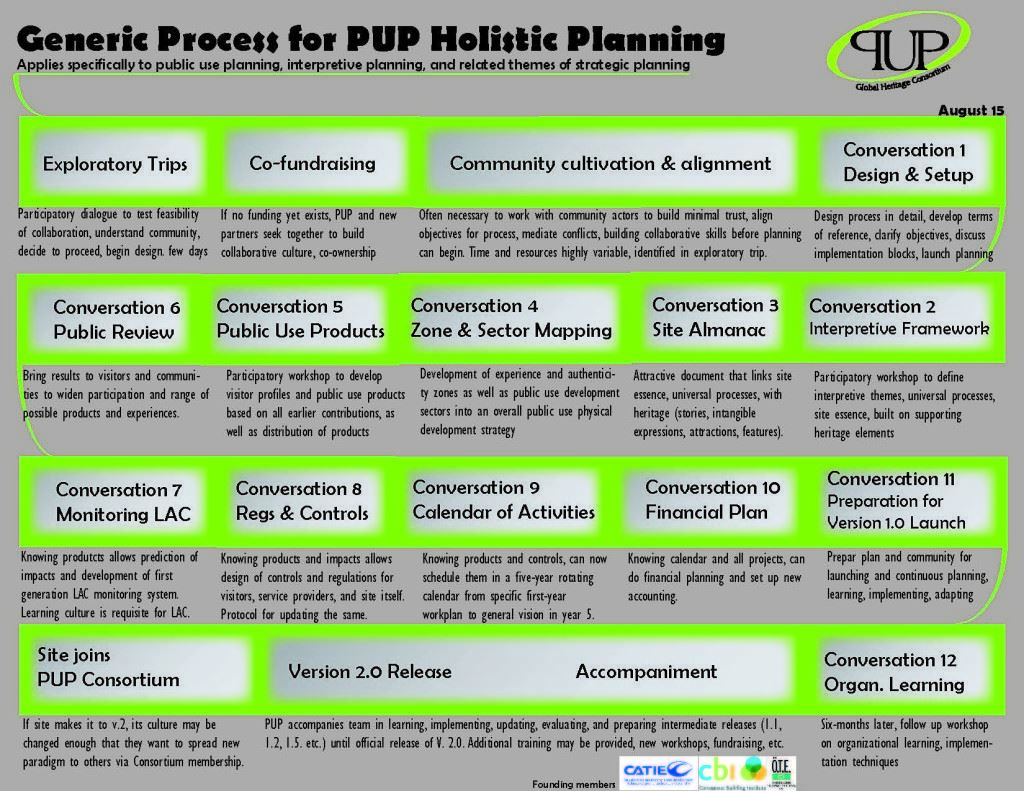
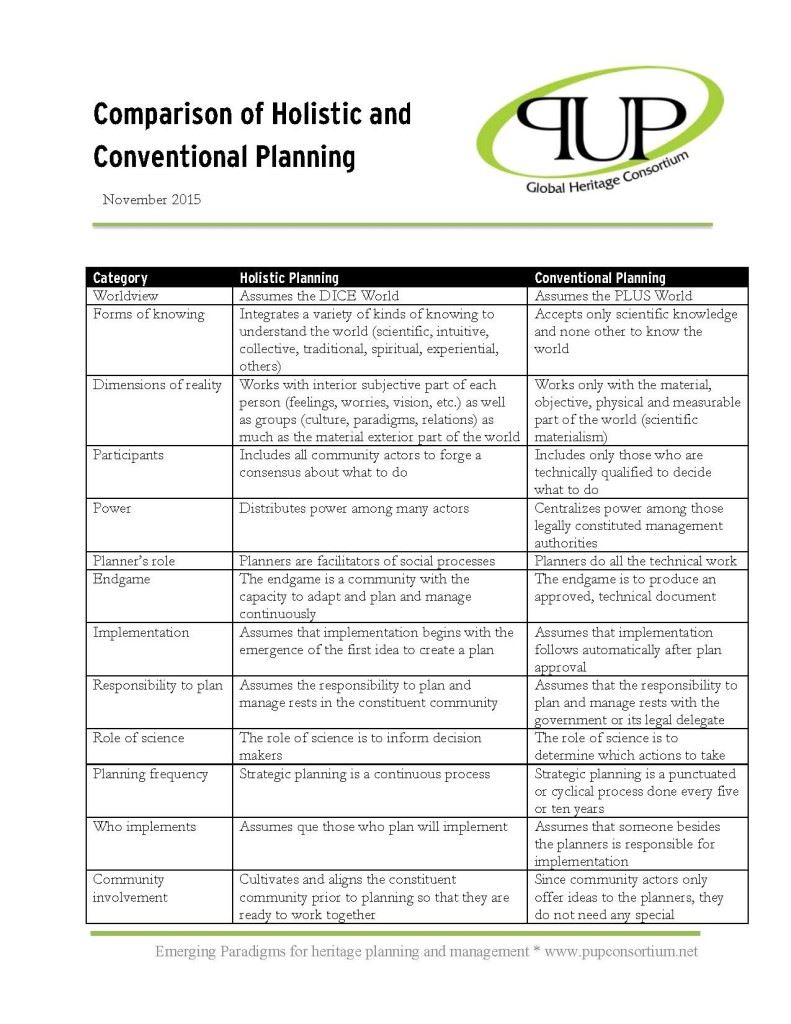


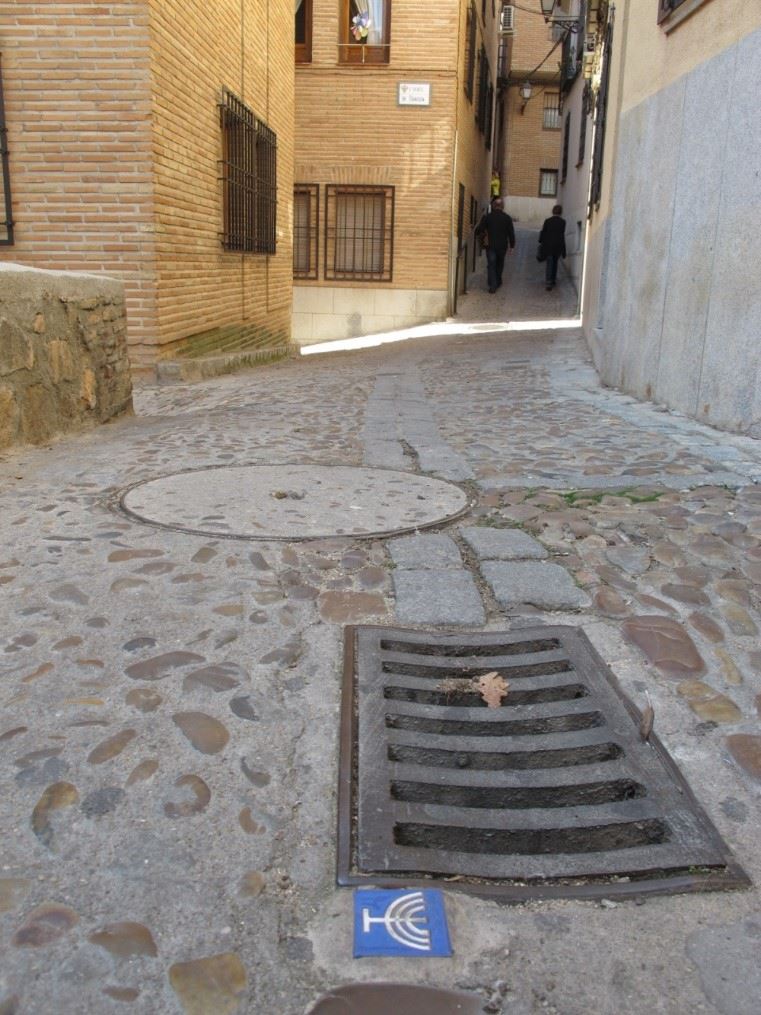
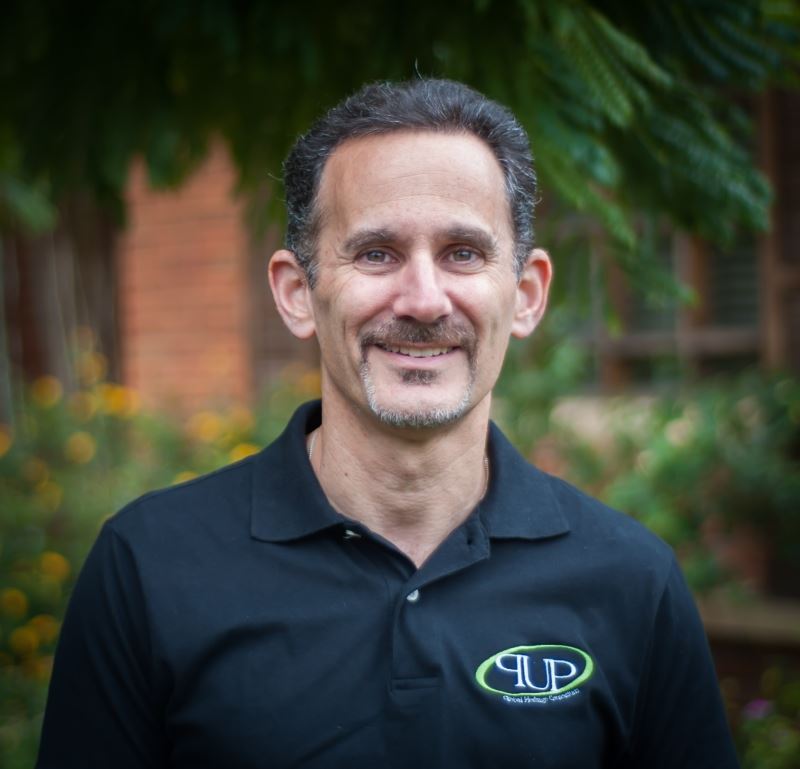 Jon Kohl
Jon Kohl